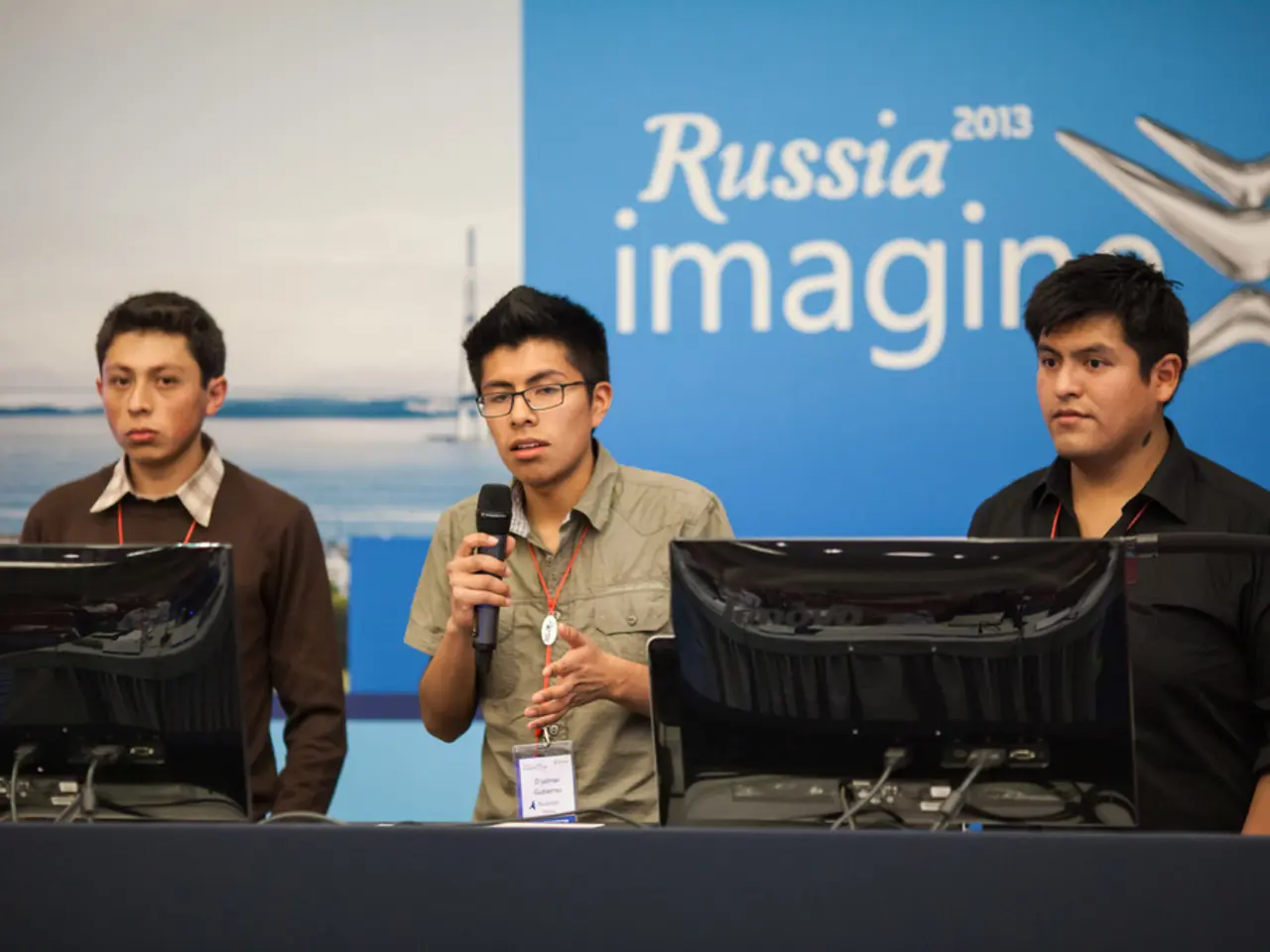Discussion on the Challenges in CISO Discourse Regarding Deepfakes: Suggestions for Communication Framing
In the rapidly evolving digital landscape, a new and concerning threat has emerged: deepfakes. These AI-generated identities and deepfake credentials are being used by adversaries such as Russia, North Korea, and China to infiltrate enterprise organizations, often acting under the guise of fake job candidates [1].
Deepfakes aren't just a future threat; they're already here, transforming the threat landscape into one that is unpredictable and ever-evolving. They can generate synthetic content (images, audio, and video) with alarming speed and sophistication, representing a more convincing, more scalable, and more capable form of social engineering [2].
One chilling example of this is the case where North Korean threat actors used AI-generated executives in a fake Zoom call to trick a crypto employee into downloading malware, demonstrating the risk of executive impersonation [1].
To combat this, Chief Information Security Officers (CISOs) must anchor the conversation in something boards already understand: social engineering. Framing deepfakes as a standalone, novel threat often leads to confusion, skepticism, or inaction. Instead, CISOs should present deepfakes as an evolved, more dangerous form of phishing that has existed within the industry for years and continues to be the number one attack vector of social engineering [3].
CISOs can effectively communicate the risk and impact of deepfake attacks to executive boards by anchoring the discussion in familiar frameworks related to existing resilience metrics, using realistic and relatable examples, and tying defense strategies directly to business and regulatory risk management [4].
For instance, a CISO might present a scenario where North Korean actors used a deepfake Zoom call impersonating executives to attempt malware delivery, linking that to the risk of data theft and brand harm. The CISO would then show how this risk fits into current enterprise risk management structures and how running deepfake-specific attack simulations strengthens overall preparedness and regulatory posture [1][3].
It's crucial to note that the average human's ability to detect AI-generated content is extremely low, with only 1 in every 1,000 people able to accurately detect it. This underscores the need for continuous education and training, similar to phishing simulations, awareness training, and red team exercises [5].
Moreover, rather than asking for new resources, CISOs can reframe the ask as an evolution of already-approved security investments. Deepfake defense needs to become an extension of enterprise-wide resilience, requiring collaboration beyond IT and cybersecurity teams, including legal, communications, HR, and executive leadership [6].
In conclusion, the rising threat of deepfakes necessitates a strategic approach to defense. By anchoring the discussion in familiar frameworks, using realistic examples, and tying defense strategies to business and regulatory risk management, CISOs can mobilize executive support for deepfake defense initiatives, bridging the "boardroom gap" and ensuring the organization remains secure in the face of this evolving threat.
References:
[1] Deepfake Threat Report 2021 [2] Deepfakes: A Primer [3] Deepfake Attacks: A Growing Threat to Enterprise Security [4] Deepfakes: The Next Frontier in Cybersecurity [5] The Rise of Deepfakes: A New Era of Social Engineering [6] Deepfake Defense: An Extension of Enterprise-Wide Resilience
Technology, artificial-intelligence, and cybersecurity intersect in the evolving threat of deepfakes. A CISO could present a scenario where North Korean actors used a deepfake Zoom call impersonating executives to attempt malware delivery, linking that to the risk of data theft and brand harm, highlighting the need for continuous education and training in deepfake detection.




